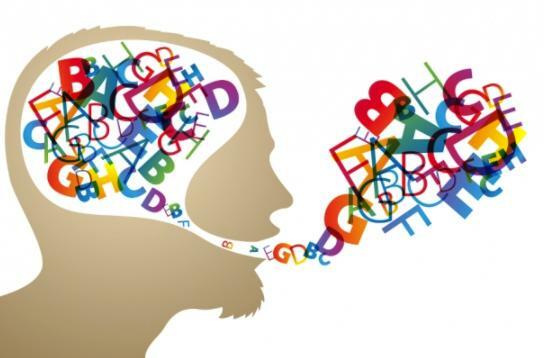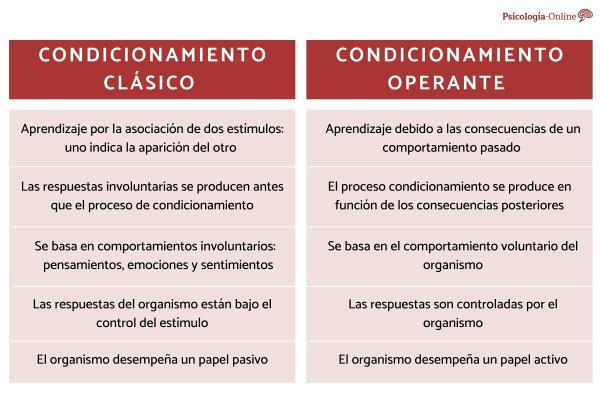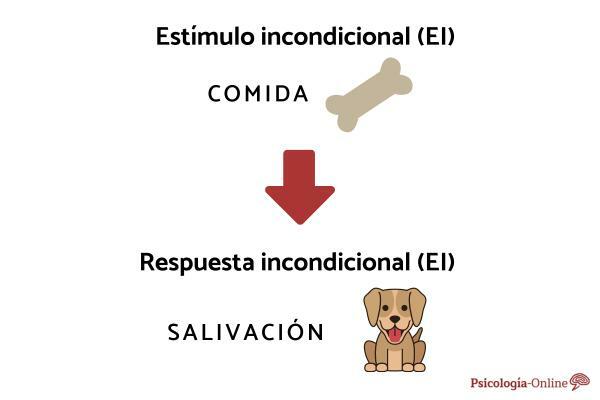
The arbitrary nature of linguistic signs, its double articulation and its consequent productivity make possible in verbal language a potentiality functional qualitatively different and superior to that of other languages that lack these characteristics. Verbal language has many distinctive features. Arbitrariness of its units and structures: lack of direct relationship (natural and / or analogical) between the signs that make up the linguistic system and their referents. Almost absolute independence of grammatical rules and principles with respect to the cognitive social functions performed by linguistic forms.
Each social or cultural community It has a conventional system of signs, as well as the grammatical rules that govern their combination and use. This gives rise to different cultural concretions of language that we call languages. These constitute cases or particular manifestations of language whose units and concrete grammar, being arbitrary, must be learned by speakers in the framework of the interactions they have with other speakers of their linguistic community or culture.
So Hockett He also points out as a characteristic feature of human language the feature called the trait of transmission by tradition. The origin and evolution of languages, the differences that exist between them in the way they designate and categorize reality and its repercussions on thought, have given rise to theoretical positions divergent. Von Humboldt, Cassirer or the determinism hypothesis linguistic or cultural relativism of Sapiro and Whorf, they accentuate the constitutive function of the object that language fulfills; All these authors, therefore, refuse to interpret language as a sign system that operates as a mere copy of reality regardless of the subject who knows it. "... the difference in languages comes less from the difference in sounds and signs than from conceptions of the world." Languages have many common formal characteristics:
- In all of them, basic units such as sounds or words can be identified.
- In all of them there are rules to combine sounds and words and form more complex units such as sentences and texts.
- In all of them there are restrictions regarding the order in which the different words can form sentences.
- In all of them the sentences express contents that seem to conform to a predicative or propositional structure.
The existence of regularities and similarities like these in all languages, but not in other animal communication systems, has given rise to postulate the hypothesis that certain properties The forms of language are universal and define specific features of the cognitive abilities and potentialities of the human species. Noam Chomsky defines the universal grammar capable of identifying and establishing, at a high level of abstraction, the parameters common to the different grammars particular and would constitute a first-order evidence to affirm that human linguistic capacity has an important biological basis and is, therefore, innate.
Focusing our attention on features of the linguistic signals themselves, it should be noted above all that the most primary human language modality (the oral modality) requires the participation of two channels, the vocal and the auditory, which implies that users of this language must meet certain requirements and conditions, both anatomical and functional. The physical characteristics of the sounds of language (amplitude, frequency and duration) can be seen as related to certain peculiarities of the anatomical configuration of the speech apparatus in the human species, such as the position of the epiglottis. Other linguistic modalities, such as literacy or manual sign languages rely on the visual and motor channels.
From the point of view of physical properties of linguistic speech signals, the acoustic signal expands multidirectionally and fades quickly. The sign is displayed continuously although in reality, the linguistic units are discrete. For the compression of the language, the participation of memory systems capable of storing and integrating temporarily the information transmitted through the physical signal and that allow its processing once it has been dissipated; Likewise, the existence of processes that allow the segmentation of the physical signal into linguistically significant units will be essential. The internal structure of linguistic units has other characteristics: double articulation or duality of patterns that refers to the fact that the linguistic system is made up of two types of units: non-significant units (phonemes) and units with meaning (morphemes, words, etc.) that result from the combination, under the conditions set by grammar, of the previous.
The linguistic systems that participate in the characteristics of duality of patterns turn out to be highly productive, open and flexible. This in turn makes it easier for users of the language to use it creatively. A set of principles or formal rules that enable the production and understanding of infinite grammatical sentences from a finite number of units was originally established by Chomsky and it constitutes one of the basic principles of modern linguistics. This author distinguished between deep structure (conceptual relationships encoded in the message) and surface structure (linguistic units that appear explicitly in said message).
This division is extremely useful for the psychological explanation of how language is understood and produced and allows us to understand, among other things, the existence of paraphrases. The units that are relevant from the point of view of the construction of linguistic meaning in verbal messages - phonemes, words, etc. - are units that admit a discontinuous graphical representation or discreet. These units, as Osgood highlights, have a hierarchical and component internal organization.
They can always be analyzed and described based on the lower level units. The combination of these units is not random: it is governed by principles or rules that are reflected in the particular grammars of each language. In the case of the oral modality, it is possible to identify other parameters of organization of the messages, which have a Suprasegmental and continuous: these are the prosodic parameters of the voice that correspond to volume, intonation, timbre, rhythm of speech. These parameters carry a great deal of emotional and pragmatic information, which makes you very relevant both from the point of view of the study of emotional expression and the study of the use of language in conversational context.
Functional Characteristics of Verbal Language.
This potentiality modulates the capacity for (emotional) expression of humans, but it also modulates and enables a particularly complex development and distinctive of the other two basic functions of language identified by Bühler: the representational or symbolic function and the communicative function.
Characteristics of the Representational Function
From a representational point of view, the particular combinatorial quality of verbal language can be related to numerous characteristics of the human species.
First (Hockett and Altmann), verbal language presents the characteristic called reference displacement or situational posture. Linguistic signs are not necessarily or directly linked to referents immediately present in the time in space, thus being able to refer to present, past or future, real or future aspects of reality. imaginary.
Paulov explained that in the human being, language does not operate so much as a system of primary signals but as a second system of signals that results from the generalization of the links or associations of the first system of signs. The possibility of generalization offered by verbal language is supported by the analysis of meaning and determines forms of reaction and response in the face of the environment that are qualitatively superior as a mechanism of adaptation to an environment as flexible and variable as the social environment human.
The situational opening or referential displacement, just as the character of the second signal system of human language liberates language and its uses from the concrete and immediate physical reality and allows it to operate as a representational system of purposes general. Language can be interpreted as a code not linked to specific contents, states or needs that, at the same time time, makes possible particular forms of knowledge of reality that are presumably specific to our species.
Insofar as signs can be created and used in our species to account for meanings not linked to immediate reality, language expands its representational functionality practically unlimited. For example, human language can be applied to describe and analyze the very activity of "saying." This trait is known as the reflectivity trait and gives rise to the metalinguistic knowledge. The possibility of analyzing one's behavior through language constitutes the germ of consciousness reflective and self-controlled behavior, undoubtedly two of the most precious functional achievements of our species.
Human language operates as a second system of signals, that is, it does not directly represent or point to reality. rather, it represents mental representations that subjects have and build about that reality (meanings). Linguistic signs imply meanings constructed through principles of generalization and individualization, which must be known and shared by both the sender and the receiver. Linguistic signs are and exist as such insofar as they are signs constructed "by someone and for someone"; also that its use involves both simple encoding and decoding processes as well as interpretation processes that, without a doubt, are unthinkable outside the scope of our species.
Language not only designates things, it not only fulfills the representation referential function: at the same time that it presents them to us, language also describes things to us and informs us about how they are, describes their properties and, in Consequently, it qualifies the very reality that it represents: in this sense, we can say that language is an analytical system of representation.
The representational function of language It possesses many other supposedly characteristic and specific features:
- The frequent ambiguity of linguistic statements
- The existence of connotations that modulate the literal or conventional meaning of words based on the experience and personal or sociocultural biases of the speakers
- The possibility of saying, through language, something false that does not correspond to reality (prevarication)
- The possibility of constructing messages that convey contradictory or incongruous information at the level of the segmental or grammatical linguistic organization and the suprasegmental or prosodic one.
Some of these traits appear to be shared by other non-human species as well. However, any of them allows to clearly differentiate natural human language from artificial languages such as computer languages or the highway code.
Characteristics of the communicative function
Verbal language is, on the one hand, a biological or natural communication system and also a specialized system for the transmission of meaningful information, it is that is, in the transmission of information that is relevant from the point of view of the adaptation and behavior of the individual who emits or receives such information.
Second, it should be noted that this transmission of meaningful information it can take place both between people and intrapersonally, with language serving in the latter case as an important instrument for self-regulation of activity. To what extent is the communicative function performed in a similar way in verbal language and in other languages? The signs already presuppose the realization, by the users, of certain active operations of analysis and combination (both with regard to signifiers - double articulation - and meanings - generalization and categorization-).
It makes sense to think that the quality of communicative content will also be significantly different in human language compared to other languages. The differences are related to the possibility of transcending the "direct" or primary instrumental use of signs and the possibility of using language in our species in the form of apparently more gratuitous or disinterested communication.
Differential characterization of human language has to do with the way of theoretically conceptualizing the communication function itself, and more specifically, with the Interpretation of language as a natural communication mechanism or device that is not, however, simply a mechanism for the transmission of information. Should the communicative use of language by humans and those of other species be interpreted solely as a process of encoding and decoding? The known communication model proposed by Shannon and Weaver goes in that direction.
Other authors, on the contrary, highlight the intentionality of the linguistic activity, that is, interpretation of the intentional meaning (not only referential) of the messages. In order to Hans Hörmann, the messages do not provide information to the listener, but only guide him in the process of reconstructing the information that the listener has to perform by himself.
Verbal language (unlike other languages), turns out to be an extraordinarily redundant communication system, every time that grammatical signals of different types imply the repetition of the same informative content at different points in the message. The repetition of the same informative content determines that the verbal language is easily predictable by the listener, which is extremely useful considering that the auditory linguistic signal, due to its multidirectionality, is usually affected by a high noise level.
The predictability of language it makes it possible for linguistic signals to be perceived and interpreted even when they are highly degraded. This gives it an extraordinary value from the point of view of a use of language adapted to the conditions of its natural environment.
Language Characteristics as a Behavior Modality.
The main characteristic of language in terms of type of behavior is the freedom of use. Linguistic behavior lacks the necessary dependency relationships on stimuli (external and internal); on the other hand, language users have the possibility to delay their linguistic responses for as long as they deem appropriate. For these reasons, linguistic behavior is usually considered as a prototype case of intelligent, intentional and purposeful behavior, the realization of which presupposes the establishment of goals and objectives about which the subject must have a prior representation and whose explanation requires the use of teleological explanations and not only mechanists. The character purposeful language activity, which requires intentional explanations, allows us to understand why silences (examples of non-conduct) possess, in the human species, such an important informative content from the communicative point of view of our species.
Nobody cannot communicate. Silences acquire their value precisely from the fact that the human subject has the possibility of deciding whether or not he uses language and when. The breaking of the link of necessity that links linguistic behaviors with their more direct stimulating antecedents, confers a peculiar quality to human language. With the "not here and not yet, language allows us to overcome the solid chain of stimulus and response... allows us to wish an event, plan an action, remember and refer to an event. "The specificity of the nature of human linguistic responses or behaviors in relation to those of other species, however, goes beyond their apparent freedom of production.
For example, linguistic behavior is formally creative. This means that linguistic behavior cannot be interpreted as a closed repertoire of responses, but rather well, as a productive and extremely flexible activity in which the commission of mistakes. Such errors, for obvious reasons, have no place in the comunication system whose use is directly linked to predetermined stimulus conditions. In our species, the obvious fact that subjects make mistakes forces us to suppose the existence of functional mechanisms that allow them to notice them and, eventually, to correct them.
The peculiarities of human linguistic behavior are also linked to specific conditions of functional organization of the systems responsible for the use of language (in this case, the feedback of the messages itself). In order to Skinner use of language It can be seen as an instrumental behavior, because it can be related to certain antecedent conditions of the issuer or the environment and certain consequences or effects on the environment. The possibility of transforming the behavior, knowledge or emotions of others from the language makes this, then, one of the main instruments of interpersonal regulation and Social.
Linguistic activity has many other differential characteristics as a form of conduct or behavior. For example, it presents the interchangeability characteristics of roles between sender and recipients and the need for complete feedback. Role interchangeability and the need for feedback can be seen as closely related to the greater probability that we have as a species of making errors in the coding or interpretation of the messages.
These two properties lead to the assumption that the activities of language production and compression, since they must be carried out simultaneously, it shares a good part of its structures and functional characteristics, although, probably, they also present important difference. The importance of the interlocutor and interactions linguistics and non-linguistic in which the use of language is framed, also show, although collaterally, the importance that for a correct interpretation of linguistic activity has the analysis of the context in which it is develops.
From another perspective, verbal language appears as a highly specialized and complex type of activity. For one thing, it does not appear to serve a primary biological function. On the other hand, its realization implies the competition of extremely varied types of knowledge and processes. From a neurophysiological perspective, the specialized nature of language seems to be supported by the confirmation that there are certain peculiarities in the configuration of some of the linked peripheral systems to language.
Certain data from anthropological research studying the cortical and peripheral structures of other primates and, and very especially, neuropsychological research of the deficits in the use of language associated with certain brain lesions have also provided, in recent decades, first-rate evidence about the neurological substrate of human language and its process from phylogenetic development and fixation. Other authors have questioned the specificity of the linguistic process and highlighting its important points of biological and functional connection with the language of other species (especially primates higher).
This article is merely informative, in Psychology-Online we do not have the power to make a diagnosis or recommend a treatment. We invite you to go to a psychologist to treat your particular case.
If you want to read more articles similar to Functional and Structural Characteristics of Verbal Language, we recommend that you enter our category of Basic psychology.


